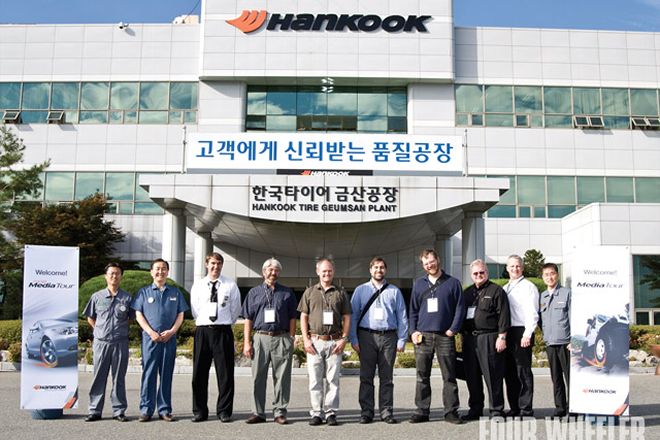
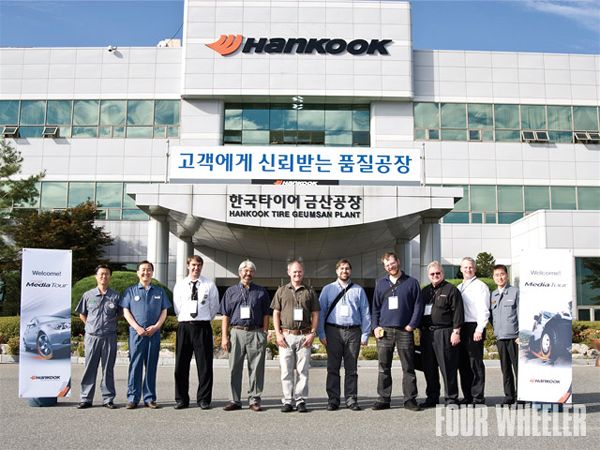
Nobody will dispute that tires are essential to everyday life. But what if everyone thought of tires as "your vehicle's interface with the ground" instead of expensive expendables? Maybe then consumers would be more likely to learn about tire attributes and discover what makes a quality tire perform better and last longer than their cheap off-brand counterparts.
In Korea, tires are plentiful, just like here in the U.S. Yet, the vast majority of consumers in South Korea maintain the "glass-is-half-full" attitude towards purchasing car tires. We noticed this firsthand last October when we toured Hankook's world headquarters in Seoul, South Korea. Thanks in part to a strong network of T-Station facilities that emphasize educational sales practices when it comes to tires, Hankook is the leading tire manufacturer in that part of the world. Even more impressive is the fact that Hankook is the seventh largest tire manufacturer in existence today, and they are the fastest growing of all tire makers world-wide.
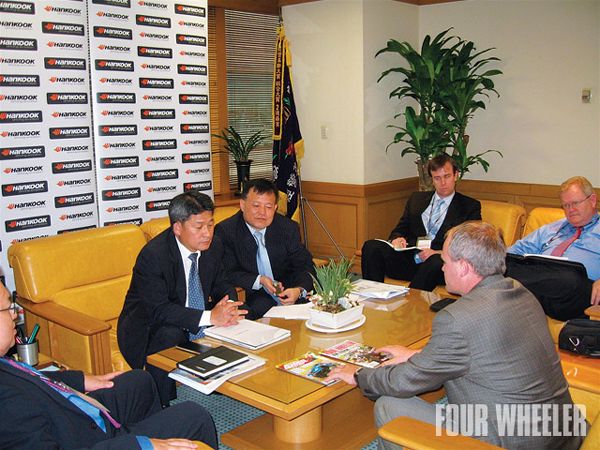 Having the opportunity to discuss Hankook's multiple divisions and their varied purposes was among the more memorable moments of the trip for Stover.
Having the opportunity to discuss Hankook's multiple divisions and their varied purposes was among the more memorable moments of the trip for Stover.
Like most quality tire makers, Hankook invests a great deal of revenue into product development, and it shows when you walk through their Daejeon, South Korea, R&D headquarters. The engineers that develop the cutting-edge technologies for the company's product portfolio have astonishing resources available for the job at hand. From a pair of $30 million-dollar lateral load generator machines to a state-of-the-art race track/test facility, the Hankook team is well armed. Despite a global trend towards downsizing, Hankook continues to expand operations, building massive new production facilities and introducing new compounding technology that employ advanced engineering concepts. A few of these concepts are TCT (Trapezoid Contour Theory) Technology, Silica Compounding, FSO (Footprint Shape Optimization) Technology, and CCT (Carbon Compounding Technology), all of which are available in many of Hankook's best-selling passenger car tires. From our perspective, tire quality boils down to three things: Materials used, construction methods, and tread design. Each of these three elements will directly affect the total result of the product. Mastering these three elements is critical to the brand of any top-tier tire maker.
Materials
In the world of tire manufacturing, there are three basic types of materials used: Organic rubber harvested from trees, synthetic materials developed in the lab using chemical compounds, and petroleum-derived or oil-based materials. Hankook blends each of these to create proprietary tire compounds that exceed the requirements of typical consumers. Additionally, an emphasis on green technologies has pushed Hankook into the next big development for tire manufacturers everywhere. The result of this push to build a greener tire is in fact quite important in the grand scheme of things. The EPA recognized Hankook with the coveted SmartWay Certification in 2008, a first for a tire company.
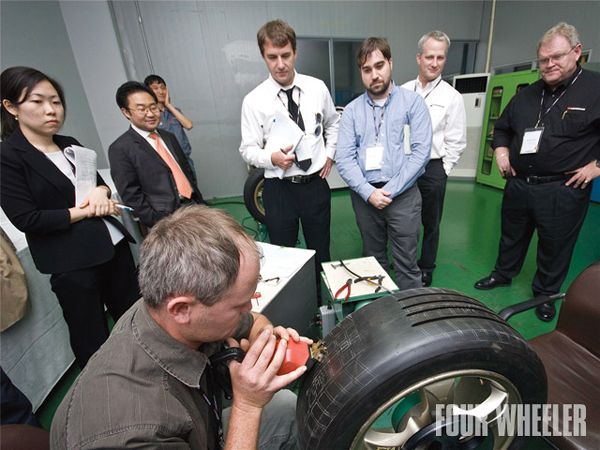 Feature Editor Robin Stover tries to groove parallel lines on a prototype tire to learn about the methods used by Hankook's engineering team.
Feature Editor Robin Stover tries to groove parallel lines on a prototype tire to learn about the methods used by Hankook's engineering team.
Construction Methods
The Daejeon manufacturing facility was one of the highlights of the tour. Several high-tech and computer-driven systems work together seamlessly with human workers. Many parts of this facility are interesting to us. For starters, a tire manufactured at the Daejeon plant is handled by only seven pairs of human hands from start to finish. Instead, several mechanized systems are used to perform the various tasks associated with tire construction. This lack of human interface translates into a product with little to no chances for variables--a bad thing in tire production because they typically lead to tire failure in the real world.
We watched as the raw rubber sheet material was unloaded from bins carried by a robotic forklift onto a conveyer system that delivered it to several preparation processes before finally reaching the tire mold machine. The most impressive part about the process was the point where the flat strips of rubber material are rolled up together to form a tire carcass. A laser-guided machine draws the rubber sheeting onto a segmented drum that aligns each layer of the carcass together perfectly as a forming machine rolls the pieces together to form the basic donut shape that later becomes a tire. A quality control representative oversees this process, and can stop it if problems arise, but otherwise, he has little effect on the outcome of the carcass, again eliminating any chance for human error.
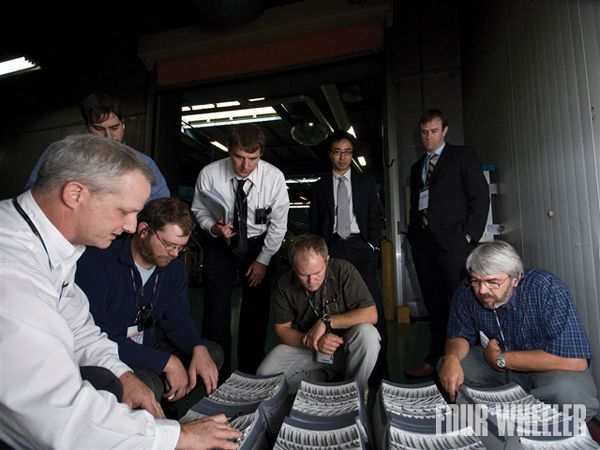 Here, our tour guides explain how a segmented tire mold creates the tread design of a tire.
Here, our tour guides explain how a segmented tire mold creates the tread design of a tire.
Tread Design
Consumers ask tires to do the impossible every day. Rising to these challenges, manufacturers such as Hankook have assembled a series of test procedures that each and every new tread design must pass to be considered for production. It all starts in tread concept and in the design lab. Here, engineers use computer designs, and hand-carve a working prototype tire to be used for further testing procedures. We got a chance to try out the tools Hankook engineers actually use when making these prototype tires. The idea here was to demonstrate that one-off prototype tires are super-expensive to build. Not only does it take weeks of hard work from an experienced person with a steady hand, but you actually need to have an artistic eye--after all, the look of a tire matters too.
Tire Testing
We left South Korea with a newfound respect for the process of manufacturing quality tires. We gained some important knowledge about what makes a high-performance tire stick to the road better than a run-of-the-mill tire. We now understood how much testing Hankook requires prior to a new tire's introduction. Back home in the States, we still needed to conduct a real-world tire evaluation on one of our project vehicles. So we requested a set of 33x12.50R16 Dynapro M/Ts to try out for a few months. We mounted these to a set of Dick Cepek DC-1 wheels under a 1997 Jeep TJ and ran the tires in every type of terrain we could find. In the end, our respect for the Hankook brand was only strengthened by a solid-performing tread that exceeded expectations, both on-road and off.